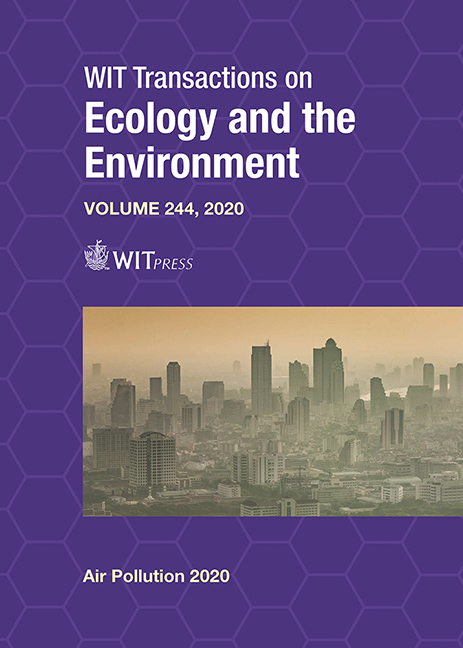ASSESSMENT OF THE IMPACT OF ROOF-LEVEL BUILDING FEATURES ON AIR POLLUTION INSIDE URBAN STREET CANYONS
Price
Free (open access)
Transaction
Volume
244
Pages
11
Page Range
15 - 25
Published
2020
Size
506 kb
Paper DOI
10.2495/AIR200021
Copyright
WIT Press
Author(s)
BIDROHA BASU, FRANCESO PILLA, AONGHUS MCNABOLA
Abstract
Air quality in urban street canyons is often known to be poor due to the restricted environment for dispersion created by the surrounding buildings. The present study investigates the installation of a deflector system at rooftop level in order to reduce air pollution inside a street canyon. Numerical simulations were conducted to model air pollution dispersion inside a two-dimensional street canyon. The distribution of PM2.5 air pollution concentration at different heights within the canyon were investigated, both with and without the presence of the deflector system, located at roof level. The simulations were repeated for different ambient wind velocities and for perpendicular wind directions. The results indicate that significant improvements in air quality inside the canyon can be achieved using the deflector system to increase the amount of air exchange taking place at roof level. The improvements in air quality were affected by the angle of inclination of the deflectors at roof level. The optimal combination of deflector dimensions, orientation and weather conditions resulted in a reduction of PM2.5 air pollution concentration of 61% inside the canyon. For practical implementation of the baffle plate, a real-time operating system based on the wind speed measurements needs to be developed, enabling variable inclination angles. Further research is also required to examine the impact of this concept in three dimensions and for varying canyon geometries. This proposed system of passive air pollution control offers significant scope to improve air quality in street canyons with a relatively inexpensive intervention at roof level.
Keywords
computational fluid dynamics, delayed detached eddy simulation, PM2.5 air pollution, passive control structure, rooftop deflectors, street canyon





